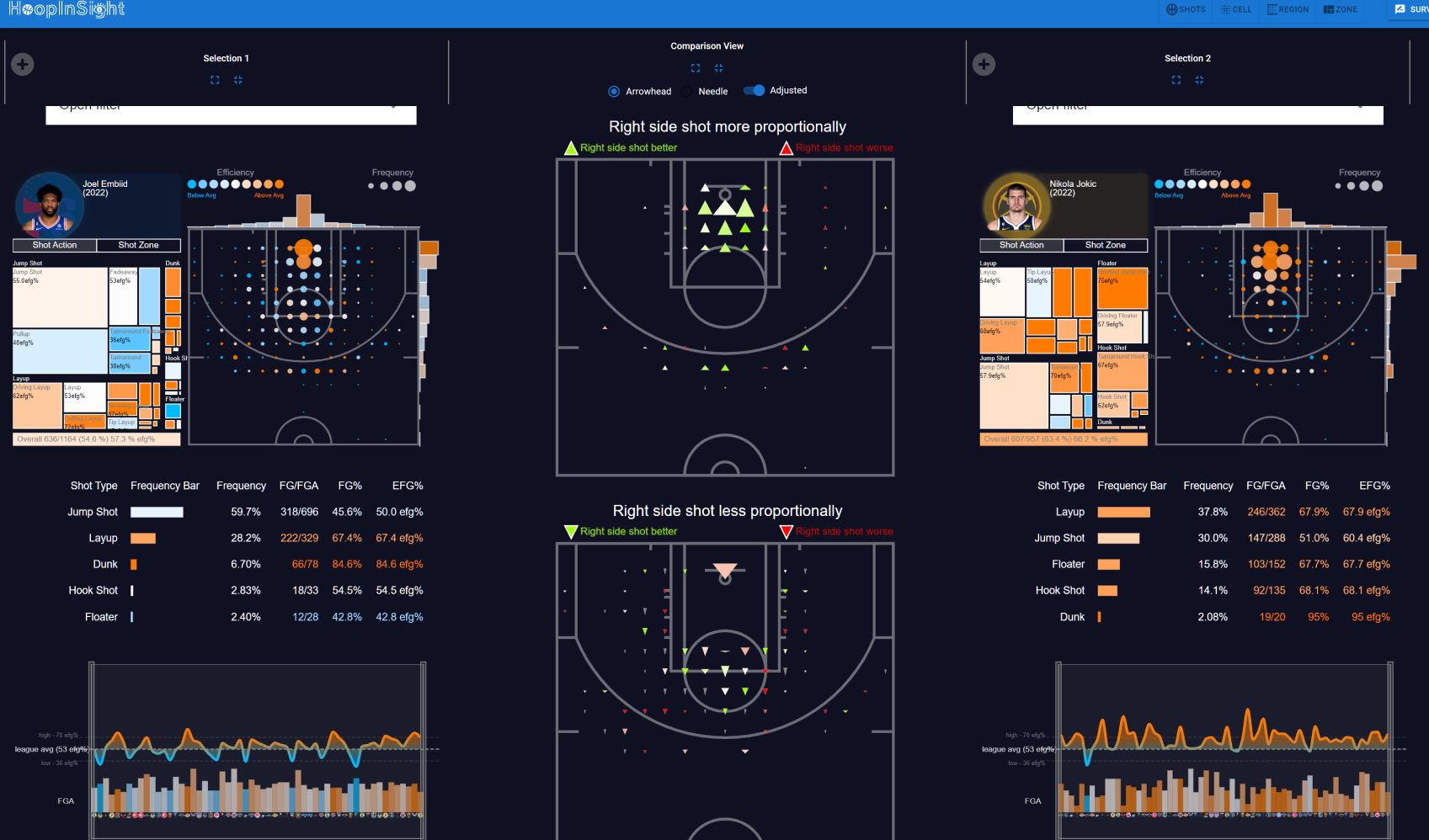HoopInSight: Analyzing and Comparing Basketball Shooting Performance Through Visualization
Yu Fu, John Stasko
DOI: 10.1109/TVCG.2023.3326910
Room: 106
2023-10-25T22:12:00ZGMT-0600Change your timezone on the schedule page
2023-10-25T22:12:00Z

Fast forward
Full Video
Keywords
sports data visualization, sports analytics, visual comparison, basketball
Abstract
Data visualization has the power to revolutionize sports. For example, the rise of shot maps has changed basketball strategy by visually illustrating where “good/bad” shots are taken from. As a result, professional basketball teams today take shots from very different positions on the court than they did 20 years ago. Although the shot map has transformed many facets of the game, there is still much room for improvement to support richer and more complex analytical tasks. More specifically, we believe that the lack of sufficient interactivity to support various analytical queries and the inability to visually compare differences across situations are significant limitations of current shot maps. To address these limitations and showcase new possibilities, we designed and developed HoopInSight, an interactive visualization system that centers around a novel spatial comparison visual technique, enhancing the capabilities of shot maps in basketball analytics. This article presents the system, with a focus on our proposed visual technique and its accompanying interactions, all designed to promote comparison of two different scenarios. Furthermore, we provide reflections on and a discussion of relevant issues, including considerations for designing spatial comparison techniques, the scalability and transferability of this approach, and the benefits and pitfalls of designing as domain experts.